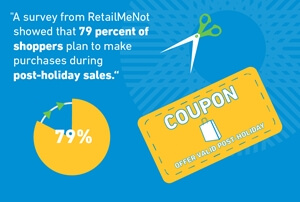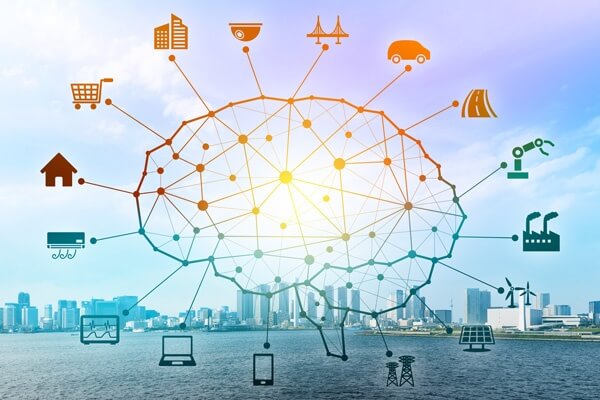Hiccups in the shipping process can have a significant trickle-down effect on the efficiency and cost-effectiveness of other stakeholders. All of them impact the integration of shipping with other facets of the supply chain and heighten risks. They have the potential to make or break supply chain ROI and can impact B2B relationships. Here are a few of the biggest concerns supply chain management professionals face in the shipping sector (and how they can be avoided):
1. Cybersecurity attacks:
In what is certainly a product of the times, container vessels need to be worried about cybersecurity. These ships use computers and software to communicate with other supply chain members, oversee inventory, and make real-time logistics decisions. If these systems are compromised by hackers, the effects could be devastating. Research shows that many maritime vessels are woefully underequipped to deal with the threat of cyberattacks. Just a few recent examples, according to CNBC, include a shipping rig delayed 19 days because its computer was so saturated by malware and a floating oil rig that was shut down when hackers gained control of its steering system and tilted it. Somali pirates have used ships’ navigational devices to choose targets, while other cybercriminals were able to locate, seize, and swipe the records of specific drug-carrying containers by hacking into a computer connected to a port in Antwerp, Belgium.
“Increasingly, the maritime domain and energy sector has turned to technology to improve production, cost and reduce delivery schedules,” stated a NATO think-tank recently reported, according to CNBC. “These technological changes have opened the door to emerging threats and vulnerabilities as equipment has become accessible to outside entities.”
Organizations can avoid cybersecurity issues by investing in managed file transfer solutions, which offer robust protection for any files shared between supply chain partners. Managed file transfer solutions also enable businesses to scale up their file-sharing environments in response to emerging needs, while enabling faster trading partner onboarding, compliance with industry standards and preventative data protection.
2. Environmental changes:
The White House recently released a fact sheet concerning the imminent threat of climate change. The report detailed some of the most potentially hazardous effects of climate change and highlighted how these factors, left unchecked, could have a negative impact on the economy. Many of these developments will directly influence supply chain management, while others will have repercussions of a more trickle-down nature.They include precipitation changes, especially heavy downpours, which have substantially increased or declined in many regions; more incidents of extreme weather, especially floods, droughts and heat waves; a rise in the duration, frequency and intensity of hurricanes, especially in the North Atlantic; more winter storms; and a global sea level that could rise as much as 4 feet within the next 100 years.
“The impacts from sea level rise and storm surge, extreme weather events, higher temperatures and heat waves, precipitation changes, Arctic warming, and other climatic conditions are affecting the reliability and capacity of the U.S. transportation system in many ways, the report stated. “Sea level rise, coupled with storm surge, will continue to increase the risk of major coastal impacts on transportation infrastructure.”
Continuity depends on reliable, adaptable B2B communications systems. If partners experience latency or cannot otherwise effectively communicate, they exacerbate the damage that environmental challenges can cause. B2B integration tools can help organizations build a more robust collaboration network, with automated protocols that can keep processes going even if there is a problem on the front lines. EDI and B2B cloud services, or B2B Integration SaaS, give companies more secure, adaptable modes of communication that can provide resilience in the face of uncertain conditions.
3. Evaluating performance:
Clearly, freight, shipping and container movements cannot be judged by the same rubrics as faster-moving, land-based operations. Many advanced metrics and analytics are geared toward real-time, instantaneous evaluations, producing insights that can be immediately leveraged to improve some aspect of the supply chain. While these metrics can improve long-term forecasting, inventory and product management efforts, they cannot work with quite the same effectiveness in the short term. A container can’t exactly be stopped in the middle of the Pacific because a new predictive analytics insight determined that it is bringing surplus inventory.This puts pressure on businesses to increase their predictive capabilities and order management effectiveness in the face of the contextual limits imposed by the realities of oil tankers and containers. It means paying attention to environmental changes and drafting continuity plans that can better handle the impact without too much of a dent in the bottom line. This process also requires organizations to build up their communications portfolios, especially in the area of B2B interactions, to ensure that problems can be handled swiftly and with a minimum of internal confusion. More robust security tools and protocols are also a must.
The maritime industry is vital to supply chains performing at peak effectiveness, but these processes will always be filled with risks. It’s up to organizations to make smart decisions about outsourcing IT infrastructure, bringing on skilled supply chain management consultants and paying attention to their B2B relationships in order to develop a satisfactory strategy.


